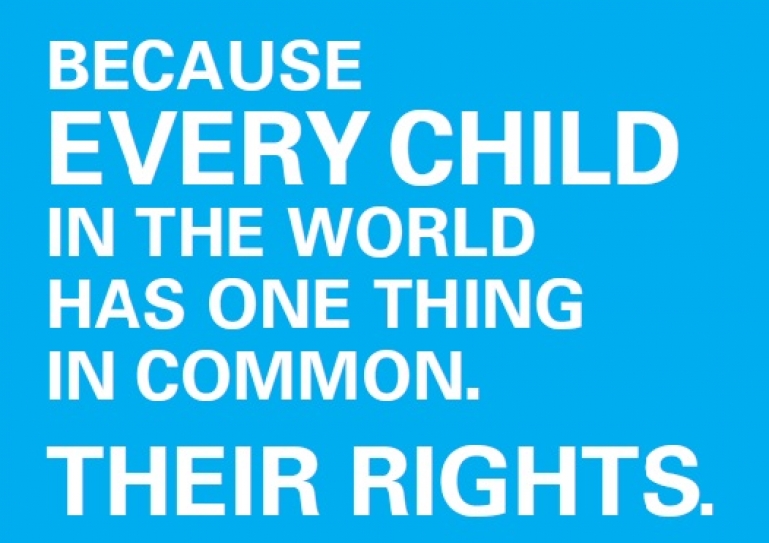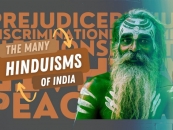
Tired Hands, Weary Feet
by Deepa Bhalerao November 14 2016, 6:02 pm Estimated Reading Time: 6 mins, 15 secs‘Slavery is legally banned. But millions of India’s children live and work in slave labour conditions — bonded labour, sex trafficking, child labour, domestic ‘help’ servitude and many other forms. According to the latest official public figures available there are at least 14 million children living under slavery. If one did a more honest counting and reporting, this number would surely jump to twice that – perhaps closer to 30 million.’
-Source: India’s Not So Hidden Shame- Child Slavery and Bonded Labour- Indian Express
On my way to work, I travel some 40 kms by various different modes of transport. From the one of the newest suburbs of the city to its commercial hub, I get to traverse many routes through many modes of transport. While I get to witness the ever increasing number of people on the streets, what I have also observed increasing with corresponding proportions, is the number of poor and destitute children.
From the local train station, through the train journey, on the crowded shop lined streets, at the traffic junctions, under the large railway bridges, on the busy sidewalks leading to the metro station, they are everywhere. From the infants in the arms of unkempt mothers begging in the scorching hot sun, to the toddlers accompanying their elder siblings who weave their way in and out of dense and dangerous vehicular traffic on the roads; from the tiny ones sleeping on the platforms with a bowl of coins before them, to those selling trinkets and flowers in local railway compartments, their faces continue to haunt the passerby.
For those of us who have grown up in large cities in India, street living children, working children and destitute and beggar children are not a novelty. These children are also being seen more frequently in the smaller cities towns. As a student of social work in the early 1990s, I had made the naïve assumption that street-living and working children were unique to Mumbai, and that it all had something to do with big cities spawning their unique problems. When the project on street living children was conceived and implemented on a pilot scale, none of us who saw it grow and gather momentum ever thought that it would, one day, mark the commencement of a nationwide intervention. As of today, Childline with its emergency number 1098 is a crucial addition to the world of rescue and relief for children in distress in India.
When a new social problem / issue arises, a solution also comes up through the mechanisms present in the society. There are stellar organizations working for the upholding of child rights in India, and many more which seek to address the different aspects of a child’s needs like nutrition, education and health. There are government programs aiming at reducing infant mortality and improving infant and child health through proper nutrition, immunization and supportive services for education and other needs of the infant and child. The social justice system has also risen to the challenge by creating a separate fast track redressal mechanism for children in conflict with the law. New laws are in the process of being framed/ proposed and amendments are being put into place to protect the needs and rights of children in our country.
And yet, this is not enough. The issue has assumed gigantic proportions and the interventions put in place are neither adequate, nor focused enough to achieve optimum results.
Some of the major areas of concern over and above the obvious ones like food, shelter and safe spaces for children are –
- Strong measures to curb employment of children in the hidden parts of production lines/ industries/ supply chains-
The British charity Anti-Slavery International on its website documents 122 products made by child labourers across 58 countries ranging from Latin America to Asia. These children might be employed at the start of the supply chain, forced into mines to extract gold, mica, diamonds and coal or made to toil in farms to produce commodities such as cotton, sugar, tea, coffee and cocoa. Children are also found working further down the supply chain, such as in the stitching of garments, manufacturing of footwear, weaving of carpets or in the assembly of fireworks.
As evident through the above report, there are many industries and production units that employ children and have escaped the notice of the law. These need to be brought under the eye of the people and the government agencies so that appropriate action can be taken.
- The need to have more stringent laws in place –
Despite the alarming statistics available through recent research studies, the creation of a law addressing the issue is only now in process. A draft of a new anti-trafficking bill was unveiled in India on May 30, 2016, which aimed to unify several existing laws, raise penalties for offenders as well as provide victims with rehabilitation and compensation. The law will also provide for the establishment of a central investigative anti-trafficking agency to coordinate and work between states and special courts to hear such cases. This draft came in for a lot of criticism and lead to further drafts which incorporated many crucial aspects.
Subsequently, the Ministry of Woman and Child Development has issued a new comprehensive draft bill that introduces severe punitive measures for trafficking of all kinds, from using victims as bonded labour or as child soldiers to forced begging. This bill is likely to be tabled in the upcoming winter session of the parliament.
(Read more-
http://in.reuters.com/article/india-trafficking-law-idINKCN0VJ1HL
&
- Ratification of the ILO C 182* by India- The Convention concerning the Prohibition and Immediate Action for the Elimination of the Worst Forms of Child Labour, known in short as the Worst Forms of Child Labour Convention, was adopted by the International Labour Organization (ILO) in 1999 as ILO Convention No 182. It is one of 8 ILO fundamental conventions. By ratifying this Convention No. 182, a country commits itself to taking immediate action to prohibit and eliminate the worst forms of child labour.
The reasons why India has not ratified the ILO Convention 182 need to be known. Activists and citizens alike need to raise this question and seek the response from the concerned authorities.
(Read more- http://globalmarch.org/Convention182, & http://www.ilo.org/dyn/normlex/en/f?p=NORMLEXPUB:11210:0::NO::P11210_COUNTRY_ID:102691)
As we trudge through mind-numbing figures and horrifying data, perhaps it is time to think of strategies that address directly, a social evil which makes all other strides in social development seem meaningless. And the first step would be to inform ourselves and then start a meaningful conversation about it. Children are the future of our country. Deprived of a childhood, what will our future look like?
References-
- Kailash Satyarthi Calls Upon Silicon valley To Save Children From Slavery http://economictimes.indiatimes.com/small-biz/entrepreneurship/kailash-satyarthi-calls-upon-silicon-valley-to-help-save-children-from-slavery/articleshow/52445175.cms
- India’s New Labour Rules Will Put Children At Greater Risk of Exploitation- Nobel Laureate http://www.cbc.ca/news/world/india-child-labour-law-changes-1.3562711
- How We Are Fighting Conflict And Fragility Where Poverty Is Deepest- https://www.linkedin.com/pulse/how-were-fighting-conflict-fragility-where-poverty-indrawati
- Convention 182- The Worst Forms of Child Labour- http://www.globalmarch.org/
- India’s Not So Hidden Shame- Child Slavery and Bonded Labour- Indian Express http://indianexpress.com/article/blogs/indias-not-so-hidden-shame-child-slavery-and-bonded-labour/




-173X130.jpg)
-173X130.jpg)
-173X130.jpg)

-173X130.jpg)
-173X130.jpg)
-173X130.jpg)
-173X130.jpg)